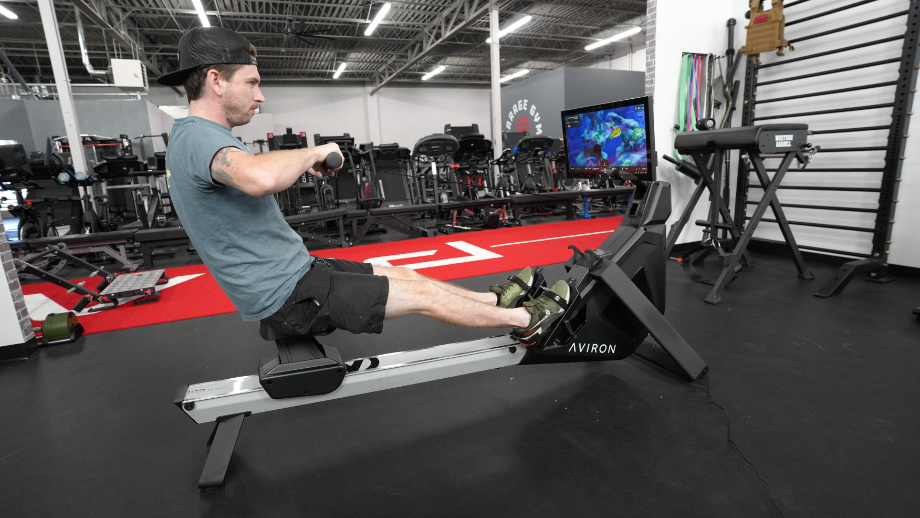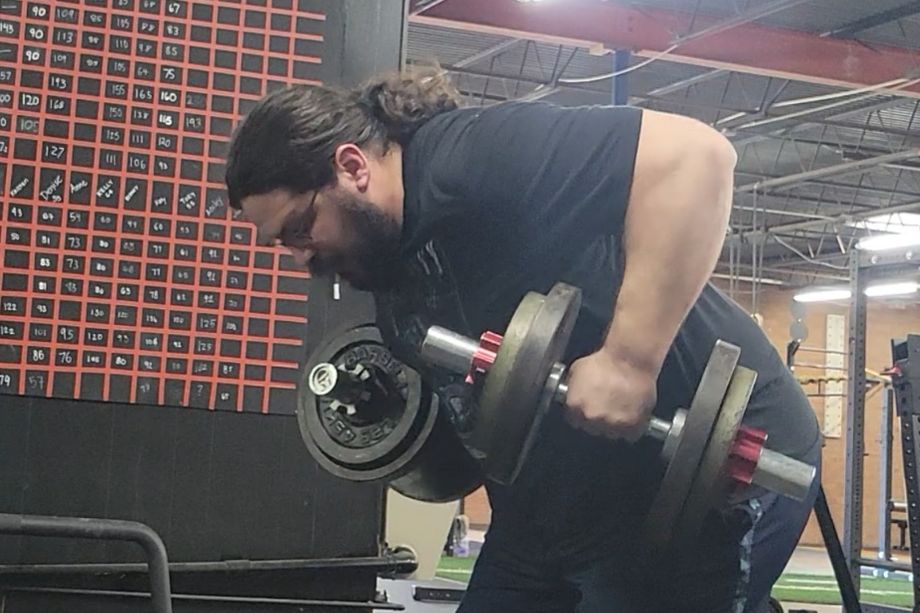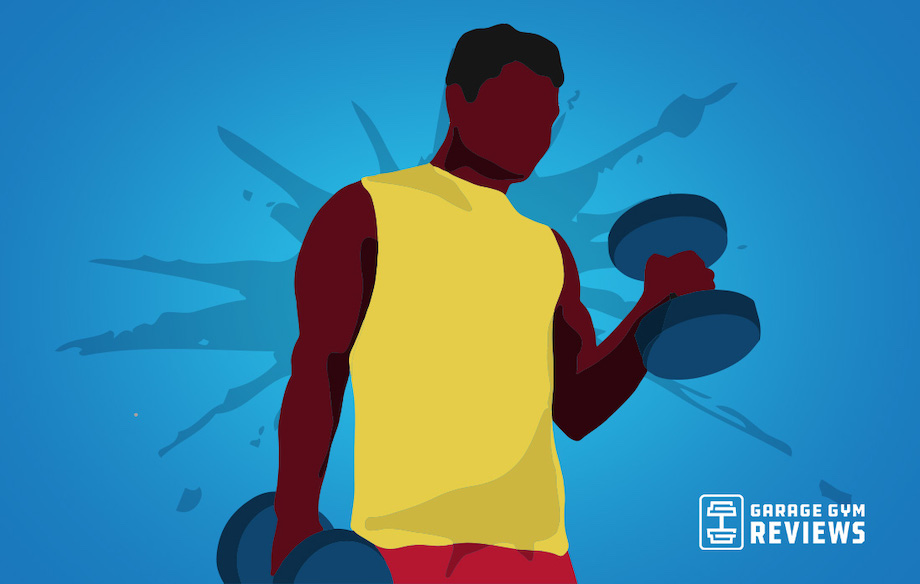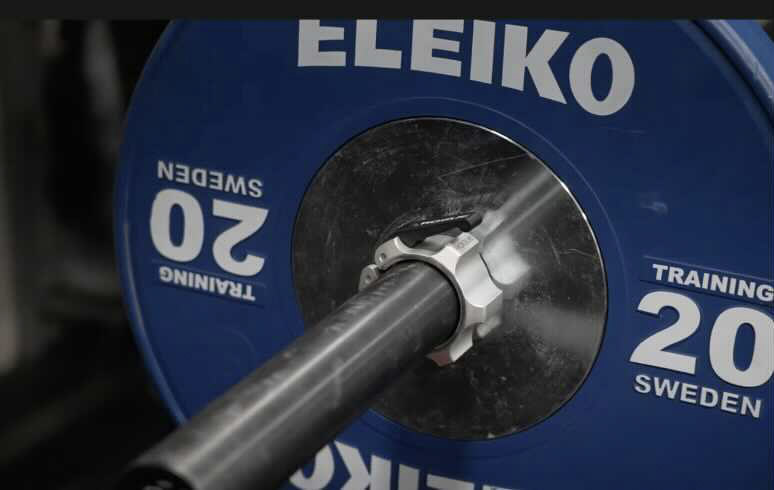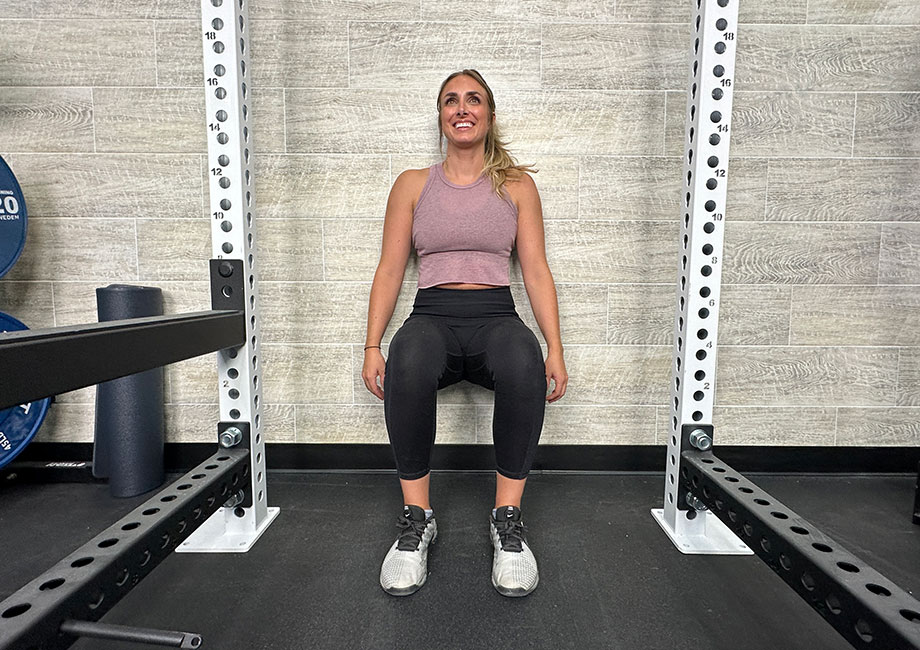Running can be a great cardio workout, but it does take a toll on the joints. Whether you’re pounding the pavement or doing all-out sprints on a treadmill, it can bother the knees and ankles, especially if you already have problems. It also may not be the best choice for beginners who are new to working out.
Having alternatives to running for cardio that can elevate your heart rate, burn calories, and improve your endurance in a low-impact way would be very beneficial for people of all fitness levels.
You may be wondering what methods would be the best fit for you. Should you do cross training, take the elliptical for a spin, perform HIIT workouts, or even take a spin class? Fortunately, we have done the hard work and determined the best cardio exercises that can help you get better.
Running vs Alternative Cardio Exercises for Burning Calories
You may be wondering what activity would burn the most calories, especially compared to running.
Harvard University did such a study on a variety of activities to determine what would provide the most calorie burning bang over the course of 30 minutes. Keep in mind, your bodyweight, sex, and other factors will play a role in how many calories you burn.
The study found that for a 125-pound person, cycling on a stationary bike was actually the most thermogenic, while a 185-pound person may see the most benefits between that as well as vigorous rowing.
RELATED: Rowing vs Running
The full study has more activities, but we picked our top choices for cardio alternatives to present here.
| Activity | 125-LB Person | 155-LB Person | 185-LB Person |
|---|---|---|---|
| Running (7.5 MPH) | 375 | 450 | 525 |
| Running (6 MPH) | 495 | 360 | 420 |
| Running (5 MPH) | 240 | 288 | 336 |
| Cycling on Stationary Bike – Moderate | 210 | 252 | 294 |
| Cycling on Stationary Bike – Vigorous | 315 | 278 | 441 |
| Elliptical – General | 270 | 324 | 378 |
| Rower – Moderate | 210 | 254 | 294 |
| Rowing – Vigorous | 255 | 369 | 440 |
| Step Aerobics – Low Impact | 210 | 252 | 294 |
| Water Aerobics | 120 | 144 | 168 |
| Walking (3.5 mph) | 107 | 133 | 159 |
| Jumping Rope (Slow) | 226 | 281 | 336 |
| Jumping Rope (Fast) | 340 | 421 | 503 |
| Ballroom Dancing | 165 | 198 | 231 |
| Dancing (Fast) | 180 | 216 | 252 |
| Swimming | 180 | 216 | 252 |
Equipment-Based Alternatives to Running
If you have a decked out home gym or access to a commercial facility equipped with cardio machines, here are some great options for aerobic exercise to replace running.
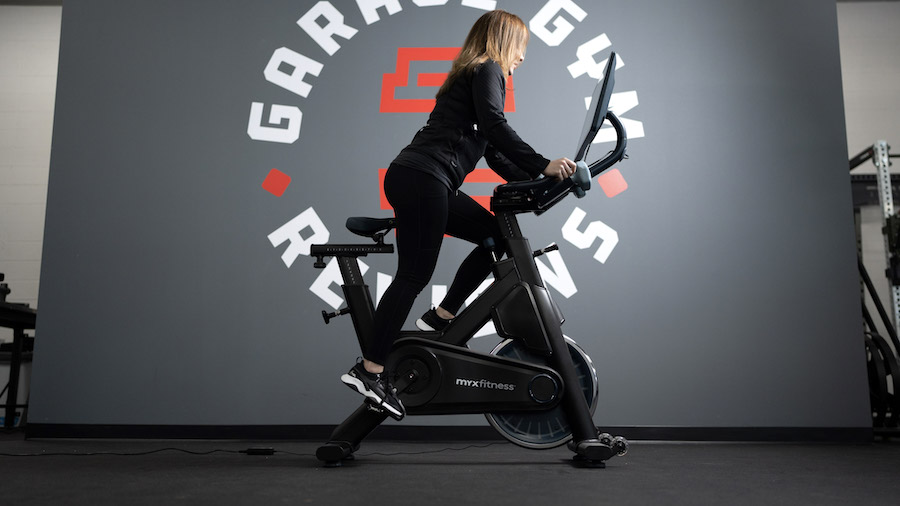
Cycle Indoors or Outdoors
Cycling on a high-quality stationary bike can be beneficial for the lower body, and it can burn a substantial amount of calories if you’re giving sufficient effort. Simply pedaling while staring at your phone isn’t going to get the job done. Going all-out for an extended time can burn you out quickly, which isn’t beneficial either.
To get a great cardiovascular workout in, you should be alternating high-intensity efforts with moderate paces for the duration of the workout.
RELATED: Benefits of Indoor Cycling
| Pros | Cons |
|---|---|
| Low impact on the joints | Pedaling in place may feel boring for some |
| You can control resistance | Upper body isn’t involved much |
| Indoor cycling isn’t dependent on weather | Weather could detail plans for cycling outside |
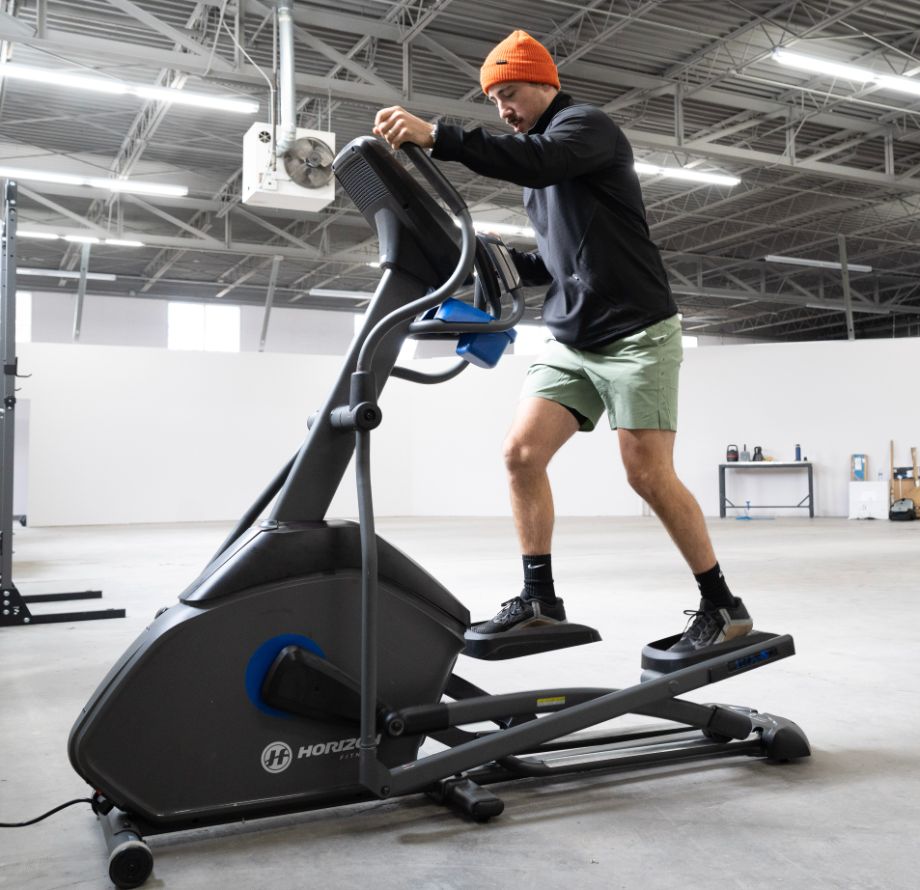
Use the Elliptical
There are two versions of the elliptical machine: one with moving arms and one without. Both are great for fitness-minded people who want to take it easy on the knees, but clearly the one with moving arms is better for increasing activity. You can also raise the incline to work more of the quads and glutes, or you can keep it lower for hamstring benefits.
The higher the resistance and incline, the more muscular work you’re going to put in (like running hills, but without having to run). If you’re looking at an alternative for your own home gym, keep in mind that many of these machines have a large footprint (though there are compact ellipticals available).
| Pros | Cons |
|---|---|
| Most versions require you to move your legs and arms | Often take up a lot of space |
| Low-impact exercise | Movement isn’t quite as natural as running |
| Smooth motion that you can control the incline and resistance level of | Can be expensive |
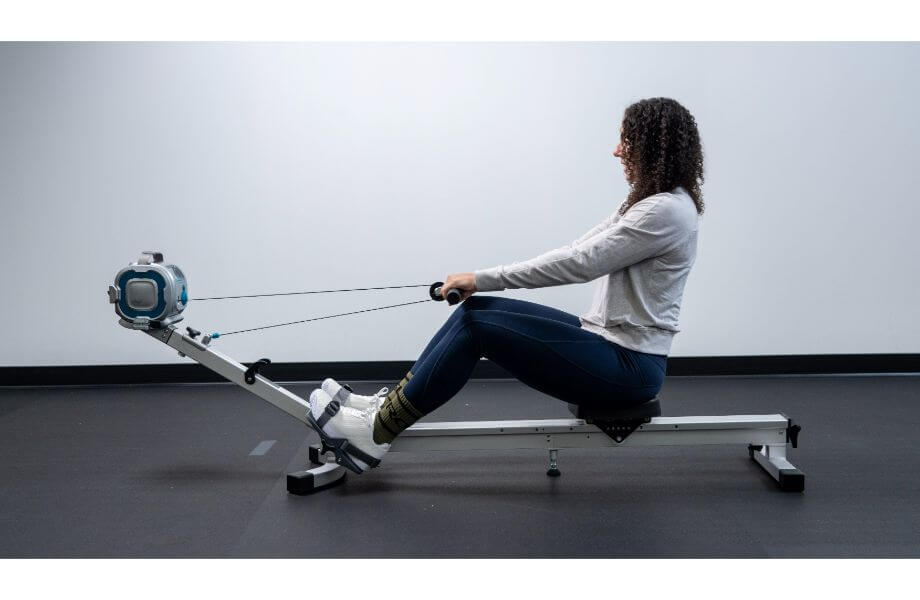
Row
The rowing machine may be one of the best ways to challenge the entire body. Several muscle groups are involved while you’re using this machine. The upper body will be challenged while you pull the handle against resistance, while the lower body is engaged through pushing into the pedals to lengthen the body, making the pull longer and more effective.
This is a great full-body exercise, and rowers don’t have to take as much space as ellipticals because some models can be folded and stored. Rowing may not be for everyone, however; if you have pre-existing back issues, the motion of rowing could aggravate that area.
| Pros | Cons |
|---|---|
| Full-body workout | May not be as effective for people with back issues |
| Machine doesn’t require as much space | Can be noisy |
| You can control resistance and effort | Machines have a large footprint |
Do Step Aerobics
Step aerobics are usually performed in classes, but they can be done on an individual basis as well. Many people associate step aerobics with the legs, but you can make the sessions more productive by adding upper body movements. Some classes have strength training components involved, too.
For active and healthy people who need a community setting, step aerobics could be a good choice to get the heart pumping with cardiovascular exercise. However, step aerobics could impact the joints for some people who are already dealing with injuries and ailments.
| Pros | Cons |
|---|---|
| Can be performed in a class or at home | May impact the joints negatively |
| Can provide a total-body workout | Fast pace may be too much for beginners |
| Active way to burn calories and increase heart rate | Constant movement around the step increase the chances of injury |
Minimal Equipment Alternatives to Running
Perhaps you need a way to train that doesn’t involve a machine at all. The good news is that there are several options that require either your bodyweight alone or minimal equipment that can be purchased online or at most sporting goods stores.
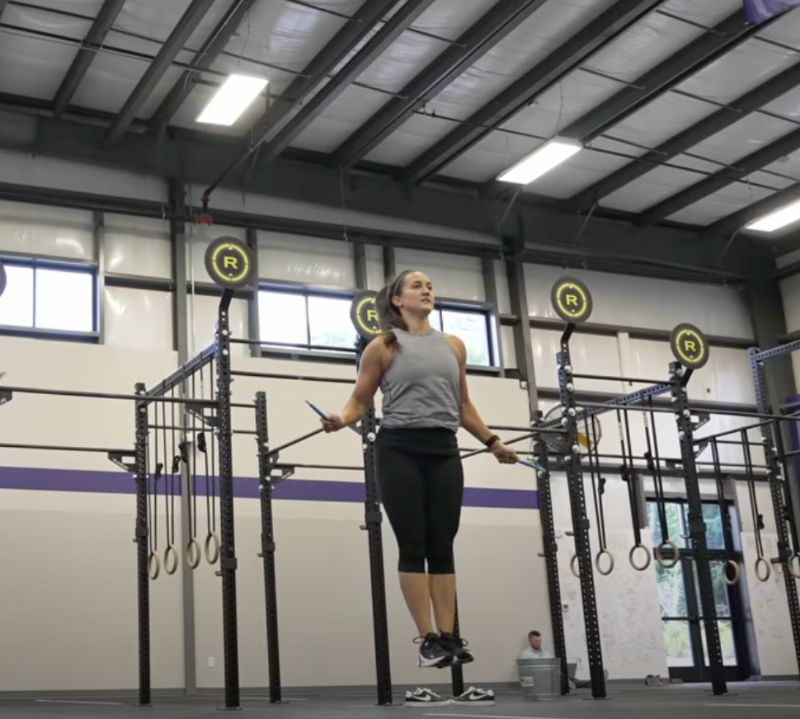
Jump Rope
Jumping rope can be a sound strategy to burn calories anytime, anywhere. All you need is a good jump rope and open space. If you have healthy knees and ankles, then grab a rope and get to work. Even though you stay in one space, you can burn calories simply by doing something you probably did as a kid.
| Pros | Cons |
|---|---|
| A rope and space is all you need | Harder for people with knee and ankle problems |
| Easy skill to develop at your own pace | Jumping on hard surface can impact feet |
| You can train anywhere and the rope can fit in a gym bag | The type of rope you use may make it more challenging |
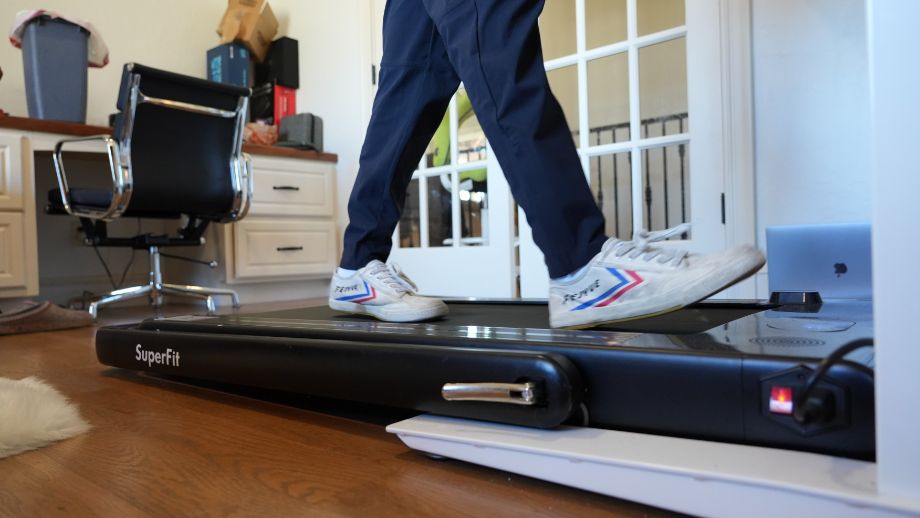
Walk
Going for a walk may be a warm-up for some people, but beginners and people who are concerned about joint health can still make the most out of walking. Walking for extended time can burn calories, and you can do it anywhere from a track to a trail or even on a treadmill.
While this isn’t a total-body challenge, you may amaze yourself by setting daily step challenges or trying to reach a certain distance over the course of a day or even a week. When it comes to cardio alternatives, walking should at least be considered.
| Pros | Cons |
|---|---|
| You decide the place and distance to walk | Must walk for a long time to burn substantial calories |
| Less impact on the joints than running | Minimal upper body involvement |
| Low-intensity exercise | May seem boring to some |
Dancing
Dancing classes such as Zumba or simply dancing to the beat of whatever music you listen to can be entertaining as well as beneficial for fitness. You can also control the effort you’re giving when dancing in whatever style you choose. It may not challenge the body as burpees or bodyweight squats might, but you can have fun and sweat, too.
| Pros | Cons |
|---|---|
| Entertaining and a structured program isn’t required | May be greater injury risk, depending on activity level |
| The entire body can be active | May impact joints if you jump and move |
| Can be performed with partners or on your own | Coordination is required from some dance styles |
Swimming
Swimming in a pool is a tremendous way to get moving, and there are minimal impacts on joints. The water can also serve as resistance if you use water weights, take an aqua aerobics class, or swim in a pool that offers a current. The whole body is active, and your muscles will feel the effects of being in the pool if you choose to swim laps.
| Pros | Cons |
|---|---|
| Full-body workout | You must have regular access to a pool or stream |
| Can be performed indoor or outside in pool or stream or ocean | Cramping could cause serious issues |
| Little to no impact on your joints | Swimming for extended periods of time is best for burning calories |
Final Thoughts
Running can be a great way to increase endurance and burn calories, but the toll on the joints and soreness that comes afterward may be too much for some people. That doesn’t mean it will be impossible to lose weight or get in great shape. There are several alternatives that can be beneficial without being as painful.
Riding a stationary bike, elliptical, or doing other activities such as dancing will all help you achieve personal fitness success. Try all of the suggestions above, use one or more as a part of your program, and you should see positive results that won’t leave you sore and struggling.
FAQs About Alternatives to Running For Cardio
What can I do instead of running?
There are several choices to consider: riding a stationary bike or a road bike, using an elliptical, walking, or swimming are all great ways to keep moving. Rowers, step aerobics, and jumping rope can all provide unique challenges as well.
What is the best substitute for running?
If running isn’t suitable for you, consider walking, doing jumping jacks, swimming, rowing, or using an elliptical. When you find a couple you enjoy the most, you will have your substitutes. The method you’re most likely to be consistent at is the one you should choose.
How can I stay fit if I can’t run?
Running is a great way to stay fit, but it isn’t the only way. A combination of weight training, cardiovascular activity of any kind, and a proper nutrition plan are all crucial in helping you become the best you that you can be.
VO2 Max Calculator
We created our own VO2 max calculator so you can estimate your cardiovascular fitness level.



